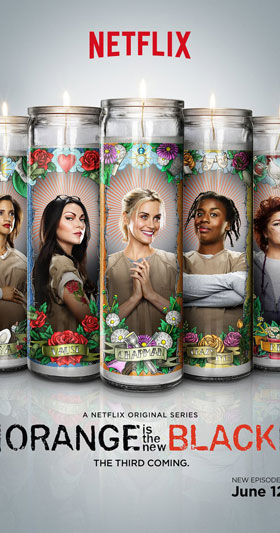
It’s a veritable feast for couch potatoes — or at least those with access to affordable and fast broadband. In the space of just a few months, almost half a dozen new video-on-demand (VOD) players have been launched in South Africa, promising an alternative to satellite pay television.
But the proliferation of subscription VOD providers — which offer libraries of movies, series and other programming on demand over the Internet — is raising questions about whether the South African market is in danger of becoming overtraded before it’s even had a chance to get off the ground.
Since Times Media Group was first to market about a year ago with Vidi, a range of other players — including telecommunications operator MTN and media and technology giant Naspers — have been launched, all hoping to stake a claim to the still nascent market.
Apart from Vidi, MTN has launched FrontRow (now with free or “zero-rated” data for MTN customers); PCCW Global has launched ONTAPtv; and Naspers has launched ShowMax. Interestingly, ShowMax has been set up as a competitor to DStv parent MultiChoice, another Naspers company, in an attempt to foster healthy competition and innovation in the group.
And yet more VOD players are set to be launched here in the coming months, including the big daddy of on-demand video, America’s Netflix, which — if industry speculation proves accurate — will launch its South African version in the first quarter of 2016, if not sooner. Vodacom and French telecommunications giant Orange are readying products, too.

All of the new players are either hoping to steal viewers away from MultiChoice, which dominated the pay-TV market, or to entice those without a pay-TV subscription to cough up for content.
It’s not hard to see why the market is suddenly so competitive when one looks at the findings of a new survey from Ericsson that shows that consumers around the world are embracing VOD in a big way.
The Ericsson ConsumerLab TV & Media Report 2015, which surveyed consumers in 20 markets and interviewed more than 22 000 people, shows that every third viewing hour is now spent watching on-demand television and video rather than traditional linear broadcast TV. The benefits are obvious: viewers get to watch what they want when they want on whatever device they want, plus they are not bothered by intrusive TV advertising.
Consumers, the survey findings reveal, now spend six hours a week watching streamed on-demand TV series, programmes and movies — this has more than doubled since 2011. With recorded and downloaded content added to the equation, 35% of all TV and video viewing is done on-demand. Remarkably, almost 10% of consumers watch YouTube for more than three hours a day — and much of this is user-generated content, not material supplied by production companies.
The report shows, too, that there has been a 71% increase in consumers watching video on smartphones since 2012 and that nearly two-thirds of teenagers’ total viewing time is spent on a mobile device.
Another key finding of the report is that binge viewing of entire TV series has rapidly become a key part of the TV and video experience. Consumers often watch hit shows such as Netflix’s Orange is the new Black or Narcos in one or two marathon viewing sessions.
“This habit is prominent among subscription VOD users of services such as Netflix, Amazon Prime and HBO, of whom 87% binge-view at least once a week,” according to the report.
Also, 22% of consumers who have never had a pay-TV subscription are already paying for VOD services, suggesting that VOD players are not only stealing customers from linear TV — the so-called “cord cutters” — but also creating first-time subscription viewers.
However, linear broadcasts remain hugely important. “The popularity of linear TV remains high, mainly due to the access it gives to premium viewing and live content, like sports, as well as its social value,” the report says. South African sports fans are unlikely to give up their DStv subscriptions easily, and MultiChoice is unlikely to unbundle SuperSport without being forced to by regulators.
Although the VOD market in South Africa has become highly competitive in a short space of time, Denis Smit, MD of technology consultancy BMI-TechKnowledge, does not believe it’s overtraded — yet.
“At this moment, yes, there is enough space as it is early days in this market. However, like other markets, it will develop a boom, bust and stabilise cycle,” Smit says.

“My concern lies more in the state of broadband fixed and mobile in South Africa regarding speeds and prices which are, at this stage, significant barriers to fast uptake and the making of real money. This will mean that this is a long game and deep pockets will be required to build a brand and gain market share.”
Smit does not expect a “winner takes all” scenario as many niche offerings will emerge to cater for the wide variety of tastes by consumers. “We are in embryo stage only in South Africa and there is a long and tough road ahead…”
But Arthur Goldstuck, MD at technology research firm World Wide Worx, thinks the shift to VOD could happen quite quickly. He says the roll-out of fibre to the home is happening much quicker than many people realise and by the end of 2016 there will be a large market of consumers for broadband-heavy VOD services.
Goldstuck says VOD players are in a race to define the market before Netflix arrives in 2016. For media companies, it’s about a new channel to market; for telecoms operators, it about filling capacity on their networks and finding new revenue streams beyond providing simple connectivity.
“We are in the early stages of the first phase of a VOD war, which will play itself out over the next two years,” Goldstuck says.
He adds that consumers should temper their expectations of what Netflix will offer when it is launched in South Africa next year. The company will be subject to the same content restrictions as other VOD players and is therefore unlikely to offer its full US catalogue to South African viewers.
Could consolidation of the VOD market be in the offing? Goldstuck thinks this is unlikely given that major industry players, most of them with deep pockets, all have an interest in succeeding in the VOD space. In the longer term, it’s difficult to predict what might happen.
In the meantime, the growing number of South Africans with access to quality broadband connections are going to be spoilt for choice.
- This piece was first published in the Sunday Times
- Subscribe to TechCentral’s free daily newsletter




